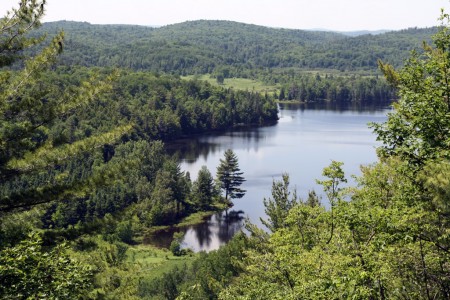The Globe and Mail is reporting on a letter send by former Alaska Governor Sarah Palin to British Columbia Premier Gordon Campbell. It complains about acid mine drainage from the Tulsequah Chief Mine in northwest B.C. Similar problems with the long-term leaching of acid and heavy metal affect many mines in Canada and around the world, including the former copper mine at Britannia, between Vancouver and Whistler.
The general pattern here is one that Frederic Bastiat would have appreciated. People can readily see the apparent economic gains associated with an operating mine, in the form of tax revenues, jobs, foreign exchange earnings, etc. What cannot be clearly seen are the long-term costs associated with all the consequences of that mining. In some cases, these significantly exceed the short-term benefits, meaning the mine has actually been a net destroyer of wealth and human welfare. Jared Diamond’s Collapse also makes this point forcefully, with many examples. Quite possibly, this is the case with fossil fuel industries today, particularly those exploiting unconventional sources of hydrocarbons like the oil sands. By tapping into hydrocarbon reserves that would otherwise remain dormant, they increase the total quantity of greenhouse gasses humanity will add to the atmosphere, increasing the severity of climate change and the probability of abrupt, catastrophic, or runaway warming. Of course, there are also the toxic effects of pollution at the sites of fossil fuel production and use, as well as the destruction of habitat and any associated reclamation costs.
The problem is not one that can be easily solved. Politicians will always be more swayed by apparent and immediate gains and losses than by distant and concealed ones. That being said, we do have the opportunity to counter some of the flawed arguments used to justify harmful practices. Next time someone claims that exports from the oil sands are crucial to Canada’s economic development, consider raising the possibility that their exploitation probably destroys wealth in the bigger picture.








